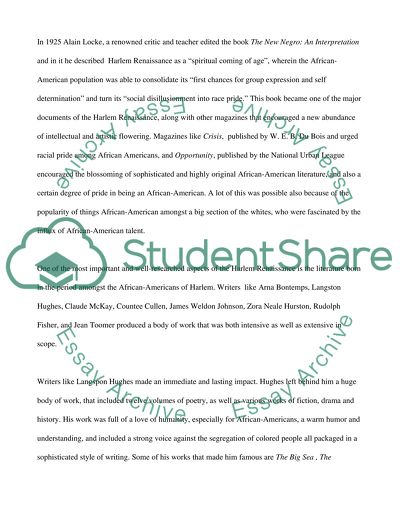Cite this document
(The Harlem Renaissance Essay Example | Topics and Well Written Essays - 1500 words, n.d.)
The Harlem Renaissance Essay Example | Topics and Well Written Essays - 1500 words. https://studentshare.org/culture/1499539-the-harlem-renaissance
The Harlem Renaissance Essay Example | Topics and Well Written Essays - 1500 words. https://studentshare.org/culture/1499539-the-harlem-renaissance
(The Harlem Renaissance Essay Example | Topics and Well Written Essays - 1500 Words)
The Harlem Renaissance Essay Example | Topics and Well Written Essays - 1500 Words. https://studentshare.org/culture/1499539-the-harlem-renaissance.
The Harlem Renaissance Essay Example | Topics and Well Written Essays - 1500 Words. https://studentshare.org/culture/1499539-the-harlem-renaissance.
“The Harlem Renaissance Essay Example | Topics and Well Written Essays - 1500 Words”. https://studentshare.org/culture/1499539-the-harlem-renaissance.


